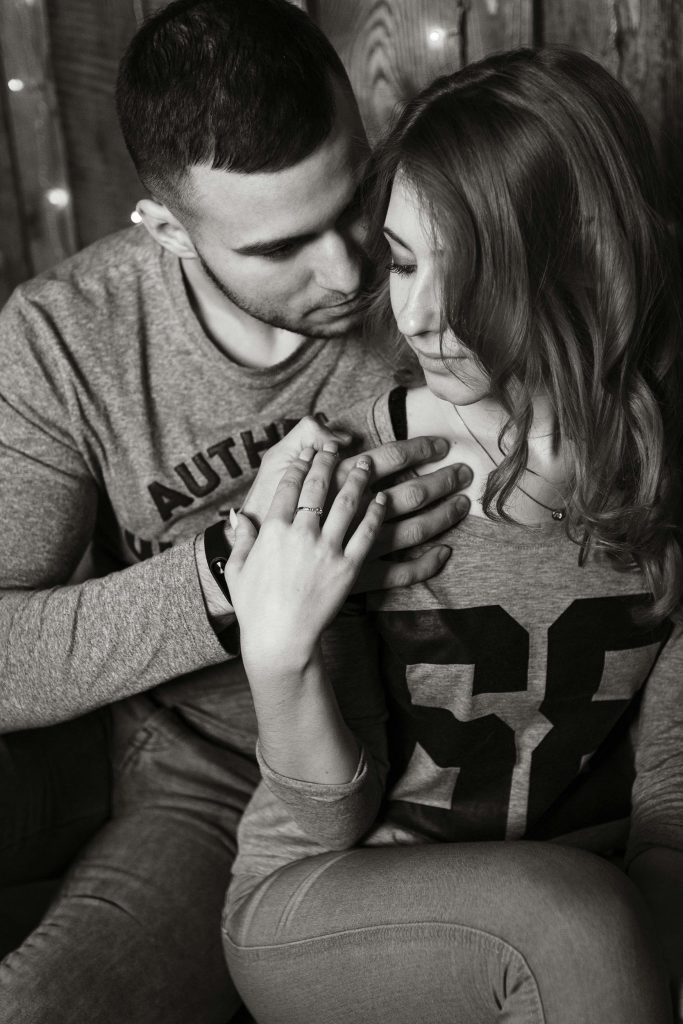
Microexpressions are subtle clues from our faces that only last for a moment. They are often subtle, but they give us insight into how someone truly feels. Researchers have found that there are universal microexpressions that transcend even language. Microexpressions can be as small as a flaring of a nostril, or the raising of an eyebrow. Often, we aren’t aware of our microexpressions, even when we are lying, so it’s a good indicator of how we truly feel. Your partner may say one thing, but their microexpressions could be saying something else. So, how do you recognize these microexpressions? Here are eight things to look for in your partner.
1. Happiness

Is your partner truly happy in your relationship? Although we may try, true happiness can’t be faked. One way to tell if your partner is truly happy is if the sides of their eye muscles are engaged forming crow’s feet when they smile. This is called The Duchenne smile, discovered by French neurologist Guillaume Duchenne.
2. Sadness
Sadness is also one of the hardest microexpressions to fake. You can tell if your partner is sad if the inner corners of the eyebrows are drawn in and then up. The corner of their lips may be drawn down and their jaw may come up. Their lower lip will also pout out. The sadness microexpression usually lasts longer than others but can be the hardest to identify. You may have to use other body language clues to identify if your partner is sad.
3. Anger
If your partner is angry there are clear signs you can see in their facial expressions. Their lips may be tense and pressed firmly together and their eyes may be bulging. Their nostrils will probably be flared, their eyebrows lowered, and their lower jaw could be jutting out. Even if they aren’t saying anything, these cues could tell you that they are upset with you. Our brains are programmed to be able to recognize anger microexpressions the fastest, perhaps to get us out of danger quickly.
4. Disgust

If your partner is disgusted you’ll probably know right away because of their facial expressions. These are the same facial expressions someone makes when they smell something foul. Disgust microexpressions include narrowed eyes, raised upper lip, upper teeth that could be showing, wrinkled nose, and raised cheeks. People often talk about getting the “ick” in relationships or experiencing something that is a turn-off. If your partner is showing any of these signs, they may be disgusted by you.
5. Contempt or Disdain
Contempt doesn’t mean that the person is lying. It’s often an indicator that the person feels superior or sees the other person as incompetent. Contempt or disdain can be seen in a smirk, rolling of the eyes, or looking dismissively askance. If your partner is displaying these microexpressions, they may not take you seriously or respect you.
6. Fear
If someone is fearful, their eyes are usually raised and drawn together. You can also see the whites of their eyes. Their upper eyelid might be raised but their lower eyelid is drawn tight. Their mouth might also be open and their lips are slightly tensed. If your partner is showing any of these signs, what you are saying to them or your behavior may be scaring them.
7. Surprise

Surprise microexpressions are very closely linked to fear. Microexpressions that signal surprise include raised and curved eyebrows, wrinkles across the forehead, and eyes open wide showing the whites of the eyes above and below. The widening of the eyes actually makes us look more trustworthy and shows that we have nothing to hide. According to a study by NYU, our brains are constantly assessing if someone is trustworthy just by looking at their face. If your partner looks surprised, it is most likely genuine.
8. Guilt, Shame, Embarrassment, Envy, and Jealousy
These emotions do not have traditional microexpressions like the previous seven mentioned. However, they do come with a mix of the traditional microexpressions. Guilt and shame may be displayed as the same microexpressions as sadness, but your partner’s head may be turned away. Embarrassment is often said to be accompanied by blushing but that isn’t true for everyone. It is one of the hardest expressions to distinguish. Envy and jealousy don’t have one distinct signal and can be a mix of cues from disgust or anger for example. Much more research needs to be done on these emotions and their accompanying microexpressions.
Learning to Read Microexpressions in Your Partner
Although you never want to assume what your partner is feeling, these microexpressions can give you a clue into their true feelings. Since they are hard to hide, you can get a better understanding of your partner’s emotions. Learning to be attuned to your partner’s emotions can help your relationship tremendously.
Read More

